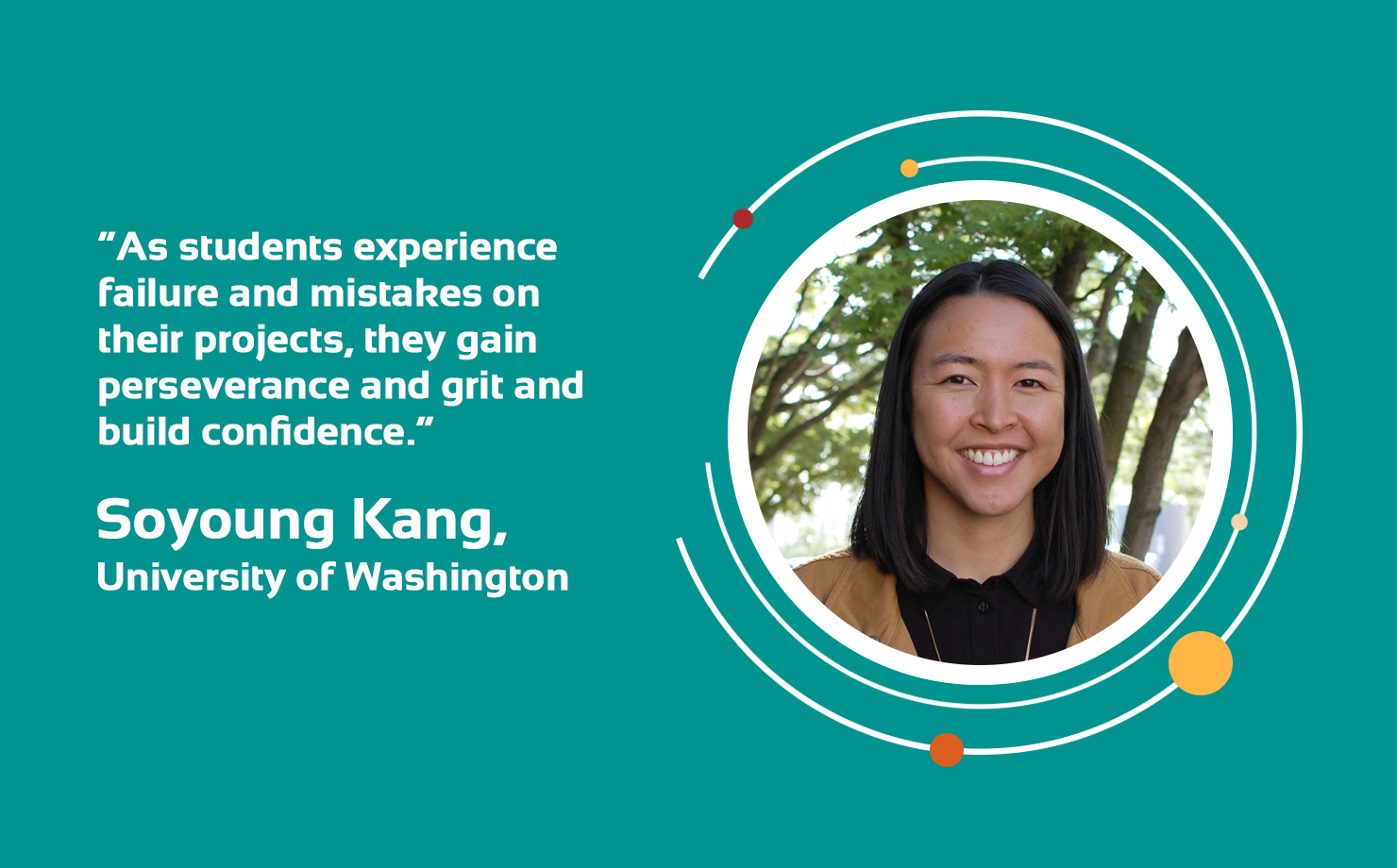
We continue our series highlighting educators within the VentureWell network who are doing good work—faculty members who are catalyzing change in higher education and inspiring students to impact the world through invention. This month’s faculty spotlight is Soyoung Kang, Executive Director of the Engineering Innovation in Health (EIH) program at University of Washington-Seattle Campus. Kang is an active member of the VentureWell community. She’s served as a Principal Investigator for teams participating in the E-Team Grant Program. She received a Faculty Grant for a new initiative within the existing EIH program that will create commercialization teams to solve pressing health challenges.
How did you get interested in teaching entrepreneurship?
I went through a rather conventional engineering education and I thought my only options were in academia or industry. Entrepreneurship had never been on my radar. Fortunately, when I was a PhD student at the University of Washington, I had the opportunity to be the teaching assistant for a program in the Mechanical Engineering department called Engineering Innovation in Health, which combines students and faculty from engineering and health sciences to foster opportunities in innovation and entrepreneurship. Now, as executive director of this program, and with more awareness of the incredible opportunities that entrepreneurship provides, I feel compelled to expose engineering students to the diversity of possible career pathways, including entrepreneurship.
What is your favorite thing about teaching?
For me, one of the best things about teaching is being able to have a small part in students realizing their own potential for impact. As students experience failure and mistakes on their projects, they gain perseverance and grit; and as they teach themselves what does or doesn’t work, they build confidence and ownership in their work. There’s nothing better than seeing students come out of this experience realizing that they developed a real solution to a real problem, and that their project can live on outside of the classroom and in the hands of patients and clinicians.
Where would you like to see the field of entrepreneurship in five years?
I would like to see an increase in accessibility of entrepreneurship education to students of diverse geographic and socioeconomic backgrounds. They often have a better first-hand understanding of unmet societal challenges. There is real opportunity for greater social impact in educating underserved student populations how to take calculated risks to bring innovations to market.
What are the challenges you’re tackling in your work today?
As EIH has been growing to accommodate diverse student teams across disciplines and academic levels while addressing complex health challenges, there has been a pressing need to develop team competencies. To address this need, our program has partnered with the Team Science core at the University of Washington Institute of Translational Health Sciences (ITHS) to provide tailored team science training to the student-clinician teams. We have found measurable improvements in team dynamics, role clarity, communication, and psychological safety. With the implementation of Team Science training, we have seen project teams move more efficiently through design iterations thereby enabling earlier de-risking of prototype solutions.
What publications on entrepreneurship and innovation have you been reading lately?
I enjoy reading the monthly Mechanical Engineering magazine published by the American Society of Mechanical Engineers (ASME), which covers a broad range of the latest innovative technologies being developed and applied to solve pressing local and global challenges. I am inspired by the amazing work featured in the magazine, and appreciate the readability of the complex topics being presented.
What’s your most useful classroom activity or assignment?
Our first assignment in EIH is for the project team to write a welcome letter. The team starts off by writing a team agreement on how to avoid team failures, and then drafts this into a “welcome letter on how the team plans to work together. Discussing expectations at the outset of a collaboration improves the likelihood of success, the NIH has found. According to a former EIH student, “the welcome letter was useful for laying foundations for team dynamics and team expectations. It also helped the clinical partner get on-board with meeting the team and understanding project expectations.”